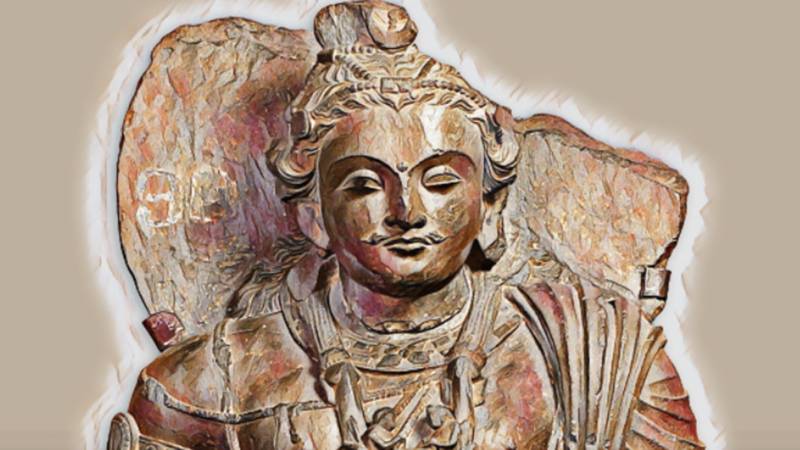
Pakistan, a country known for its Islamic heritage, holds within its borders a rich and diverse history that includes significant Buddhist influences. This ancient Buddhist heritage dates back to centuries before Islam in the region, a period of profound cultural and religious flourishing. From the ancient city of Taxila to the Buddhist ruins of Takht-i-Bahi, Pakistan’s landscape is dotted with remnants of its Buddhist past.
This article delves into the history, significance, and lasting impact of Buddhism in what is now Pakistan.
Early Buddhism and the Gandhara Civilisation
The introduction of Buddhism in the region that constitutes modern-day Pakistan is closely tied to the Gandhara civilisation, which flourished from around the 6th century BC to the 11th century AD. Gandhara, with its capital at Taxila, became a major centre of Buddhist learning and culture under the Mauryan Empire, particularly during the reign of Emperor Ashoka in the 3rd century BC. Ashoka, after converting to Buddhism, played a crucial role in spreading the religion across his empire and beyond, commissioning the construction of stupas, monasteries, and educational institutions.
Taxila, located near modern Islamabad, emerged as a pivotal hub of Buddhist scholarship. The city hosted numerous monasteries and attracted monks, scholars, and students from as far as China and Greece. The archaeological remains of Taxila, including the Dharmarajika Stupa and the Jaulian Monastery, stand testament to the city's historical significance. These sites were not merely religious centres but also cradles of art, philosophy, and science, profoundly influencing the cultural landscape of the region.
One of the most significant sites from this era is the archaeological complex of Takht-i-Bahi, located in modern Khyber Pakhtunkhwa province. This monastic complex, perched atop a hill, offers a glimpse into the architectural and spiritual achievements of the time
Art and Architecture: The Gandharan Legacy
One of the most remarkable contributions of the Gandhara civilisation to Buddhism is its distinctive art and architecture, known as Gandharan art. This unique style, which developed between the 1st century BC and the 7th century AD, is characterised by its syncretism, blending Greco-Roman, Persian, and Indian artistic elements. The result was an exquisite array of sculptures, reliefs, and frescoes that depicted Buddhist themes with a Hellenistic touch.
The Buddha statues from Gandhara are particularly renowned for their realistic human features, intricate drapery, and serene expressions. These sculptures often depict scenes from the Buddha’s life, Jataka tales (stories of the Buddha’s previous lives), and various bodhisattvas. The influence of Gandharan art extended far beyond the region, impacting Buddhist artistic traditions in Central Asia, China, and even Japan.
The Kushan Empire and the Spread of Buddhism
The Kushan Empire, which succeeded the Indo-Greek Kingdoms and ruled over the region from the 1st to the 3rd century AD, played a pivotal role in the further dissemination and development of Buddhism in Pakistan. Under the reign of Emperor Kanishka, one of the most illustrious Kushan rulers, Buddhism reached new heights. Kanishka, a patron of Buddhism, convened the Fourth Buddhist Council in Kashmir, which led to the compilation of important Buddhist texts and the promotion of Mahayana Buddhism.
The Kushan period saw the construction of grand monasteries, stupas, and educational institutions across the region. One of the most significant sites from this era is the archaeological complex of Takht-i-Bahi, located in modern Khyber-Pakhtunkhwa province. This monastic complex, perched atop a hill, offers a glimpse into the architectural and spiritual achievements of the time. Takht-i-Bahi’s well-preserved structures, including stupas, meditation cells, and assembly halls, reflect the very peak of Buddhist monastic life in the region.
From Late Antiquity to the Modern Era
The decline of Buddhism in the region began around the 7th century AD, coinciding with the rise of Hinduism and the advent of Islam. The invasions by the Huns and later the Arab conquests led to a gradual erosion of Buddhist institutions. By the 11th century, Buddhism had largely disappeared from the region, supplanted by the burgeoning Islamic civilisation.
Despite its decline, the legacy of Buddhism in Pakistan endures through its archaeological remains and cultural influence. The Buddhist sites in Pakistan, such as Taxila, Takht-i-Bahi, and the lesser-known Butkara Stupa in Swat Valley, continue to attract scholars, historians and tourists. These sites have been recognised by UNESCO for their historical and cultural significance, emphasising the need to preserve this heritage.
Furthermore, the rediscovery of these sites in the 19th and 20th centuries by British archaeologists rekindled interest in the region's Buddhist past. The excavations revealed a treasure trove of artifacts, including statues, coins, manuscripts, and pottery, and new discoveries continue to be made in our era.
In contemporary Pakistan, recognising and preserving this Buddhist heritage is crucial, not only for historical and academic reasons but also for promoting a broader understanding of the country’s multifaceted identity. Embracing this heritage will create a sense of continuity and connection, allowing Pakistanis to face the future with confidence.

